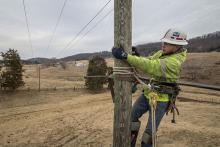California's Proposed Network Neutrality Legislation Resuscitated
Death, taxes, and legislative drama are three of life’s certainties. Most recently, the drama unfolded in California as Democratic Sen. Scott Wiener has tried to pass state network neutrality protections after the FCC revoked federal law, leaving millions at the mercy of a broken market.
Coulda, Shoulda, Woulda
California is one of a long list of states that have in some way addressed the current lack of regulations regarding network neutrality. In addition to Executive Orders in six states, including Vermont and Montana, state legislatures in 29 states have introduced legislation that address some aspect of network neutrality. Oregon, Vermont, and Washington have adopted legislation. To see a comprehensive list of state bills across the country, check out the National Conference of State Legislatures’ website.
Wiener’s SB 822 had been described as “the most comprehensive” of state legislation introduced since FCC Chairman Ajit Pai and the Republican Commissioners repealed federal network neutrality late last year. The bill passed in the Senate in late May, but amendments adopted during a contentious Communications and Conveyance Committee meeting in the Assembly transformed it into quite a different piece of legislation.




 In addition to using restrictive pole attachment agreements, incumbents were exploiting the lack of definition in the statute to slow make-ready work, question who pays for make-ready work, and generally delay municipal projects. Time is money and losing momentum can drive up the cost of of a project, which in turn erodes a community's will to see it realized.
In addition to using restrictive pole attachment agreements, incumbents were exploiting the lack of definition in the statute to slow make-ready work, question who pays for make-ready work, and generally delay municipal projects. Time is money and losing momentum can drive up the cost of of a project, which in turn erodes a community's will to see it realized.